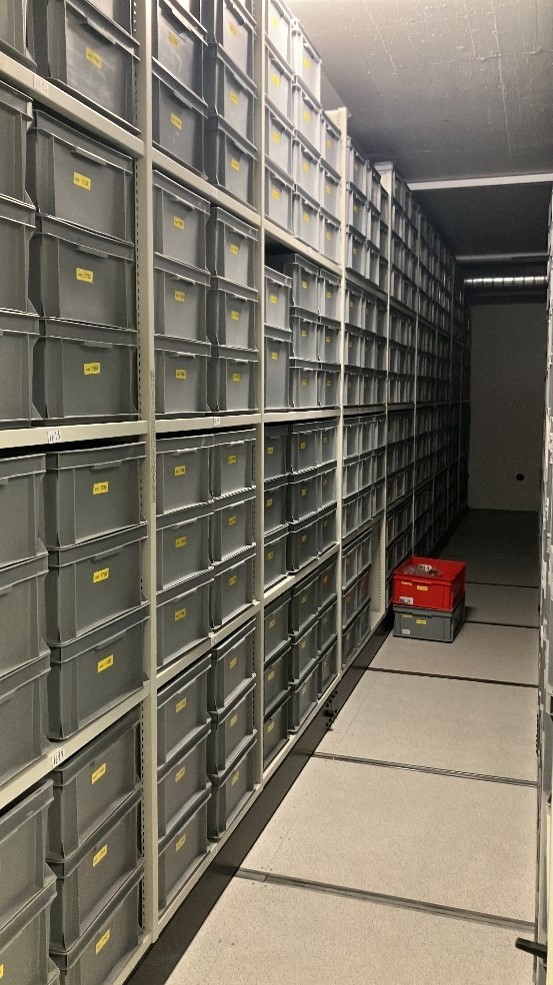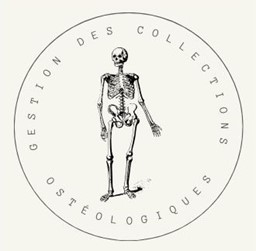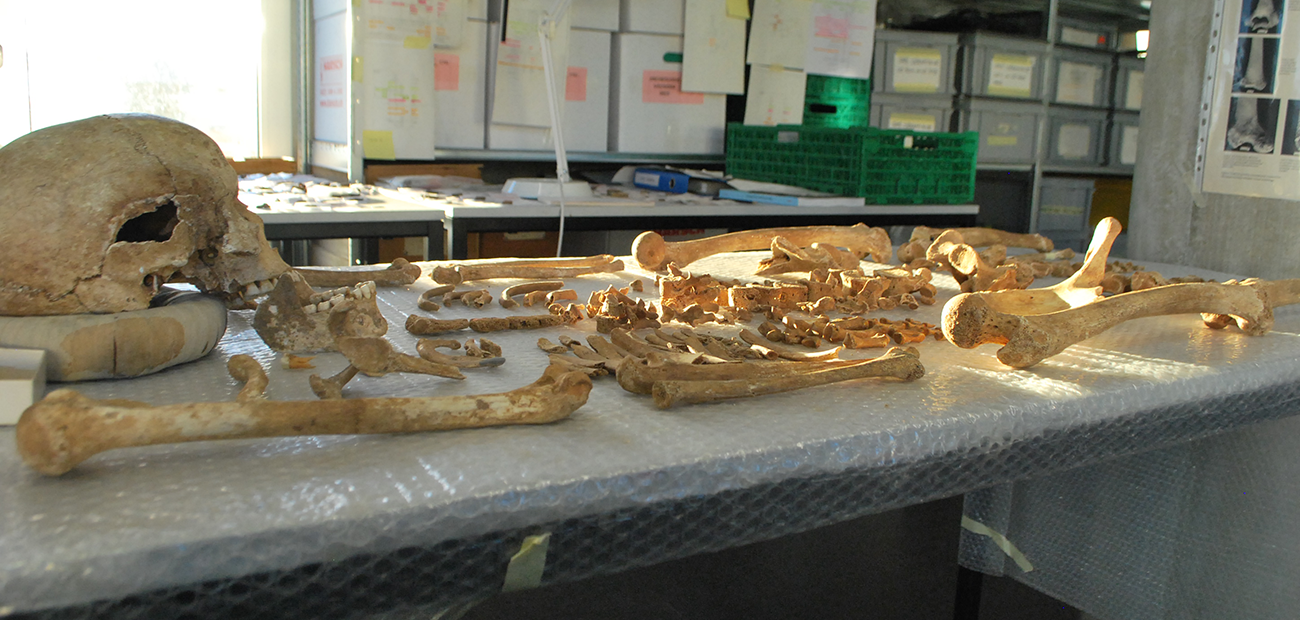Anthropology
The Cantonal Museum for Archaeology and History (MCAH) is the custodian of numerous anthropological collections originating from a variety of archaeological contexts (preventive excavations and older collections), as well as from accidental discoveries that do not fall within the scope of forensic investigations. These human remains are preserved in accordance with the fundamental principle of human dignity - a principle that remains valid even after death. The MCAH also oversees the management of scientific research related to these collections, as well as their promotion and public engagement. Through these remains, human stories transcend time - told by bones and passed on to future generations.

1. Anthropological collections at the Dépôt et abri des biens culturels (DABC).
Millennia of Human History
The MCAH’s anthropological collections span several millennia of Prehistory and History in the canton of Vaud - from the Neolithic burials of Pully-Chamblandes to the modern cemeteries of Lausanne, including the exceptional discoveries at the Iron Age site of the Mormont and the tombs of the medieval abbey of Romainmôtier. In total, more than 13,000 individual remains are currently preserved in the museum’s storage facilities. Each skeleton tells the story of a person… and a fragment of their epoch. The scientific study and public presentation of these human remains allow everyone to discover and better understand our shared past. For any questions regarding the study of these collections, please contact Dr. Hélène Blitte, curator in charge of the anthropological collections.

2. Mummified hand from the old ethnographic collections.
Letting past lives speak again
Provenance studies also concern anthropological collections. In 2024, the analysis of skulls and mummified remains from various contexts helped to shed light on the histories of these individuals, who were often taken from distant regions to be studied by scientists of the time. Through their anthropological study, the MCAH now strives to rehumanize these human remains: to restore their voice, their story, and their identity - by acknowledging them as individuals who once lived, rather than as mere collection objects (full report on the historical ethnographic collections). For any questions regarding the provenance research of these collections, you may contact Dr. Claire Brizon, lead researcher specializing in provenance studies.

Managing Osteological Collections: A Contemporary Challenge
The MCAH is committed to the thoughtful and sustainable management of osteological collections. This sensitive issue is the focus of a research project (2025-2027) led by Dr. Claudine Abegg from the University of Geneva and commissioned by the MCAH. For any questions regarding the project, please contact her at: abeggc.v@gmail.com.
Managing a collection of human remains also involves addressing many complex questions. What organizational framework is required ?
Some scientific studies involve sampling that destroys parts of the bones - yet these remains are a precious and finite resource:
. How should decisions be made regarding which research to authorize ?
. How can multiple sampling be avoided by sharing specimens among researchers ?
. Is it possible to centralize results to minimize unnecessary destruction ?
Human remains classified as "archaeological" also raise legal and ethical questions:
. What regulations must be followed ?
. How can research be conducted while preserving the dignity of individuals and respecting public sensitivity ?
This research project explores various approaches by comparing the situation in Switzerland with that of other countries and bringing together all relevant stakeholders for a shared reflection.
Partners
. Université de Genève, Laboratoire d'archéologie préhistorique et anthropologie
. Archeodunum SA
